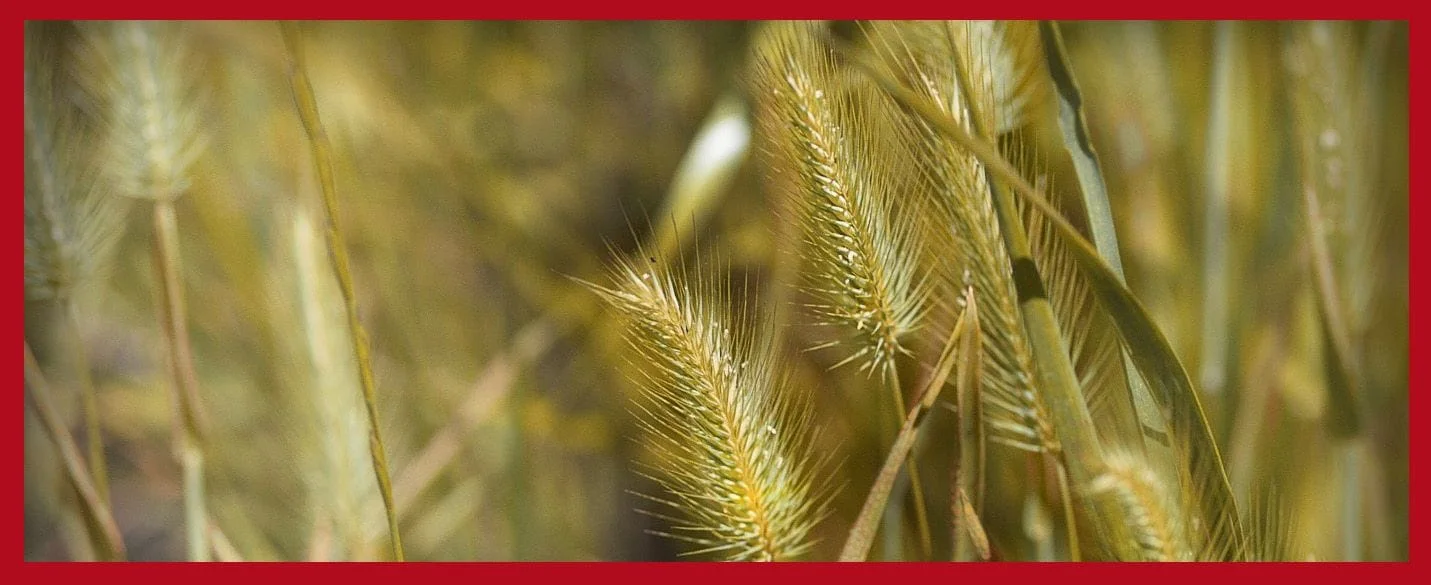This time of year, many dog owners are hitting trails to enjoy the beautiful weather with their canine friends. Unfortunately, a fun day on the trail can turn into a painful experience for your pooch from a seemingly innocent source.
Foxtails are a frequent sight on trails, open spaces and yards in Southern California. These invasive weeds are named for their clusters of spiked seed pods which resemble the tail of a fox. Foxtails usually appear in our landscape in early spring. Like the rest of San Diego county, they start out soft and green but by then end of the season they have dried to a brittle brown.
The dried, spiked clusters of the foxtail eventually break down into individual spikelets. The pods are spiked and barbed, qualities that help them penetrate the tough San Diego ground. Unfortunately, these qualities also allow them to wreak havoc on your pets.
Foxtails are a common emergency in veterinary medicine this time of year. When a dog comes in contact with a foxtail, the barbs along the spikelet attach to the fur. These barbs allow the foxail to move only one way: forward, while the sharp tip on the spikelet allows it to pierce skin or penetrate dense fur.
Foxtails will attach to almost any part of the dog that brushes against them. Common sites of infestation are ears, eyes, nose, and between the toes. They can also burrow beneath the skin along the body on thick coated dogs. Occasionally veterinarians even see foxtails buried in tonsils or under the gums of dogs who enjoy chewing on these plants.
Once embedded, these seeds rarely work their way out. Their burrowing properties wreak havoc on infected pets and continue causing painful damage until they are removed. Veterinary intervention is usually required to treat foxtail infestation. Sedation or surgery may be necessary, along with treatments to help with pain and infection resulting from “foreign body” invasion.
Signs of foxtails include:
A painful, infected ear
Head tilting or shaking
Acute, severe sneezing
Nasal discharge or bleeding
Squinting, painful eye
Red, painful bumps between toes or under the skin
There are some simple steps that owners can take to help their dog avoid a painful foxtail experience. The simplest prevention is to avoid them altogether. We find foxtails along trails, in open spaces, and in unlandscaped areas. They are common in late spring through summer and can be identified by their bushy clusters of spikes resembling the tail of a fox. Foxtails can even be found in our yards, so carefully inspect unlandscaped areas for these invaders. Even if you practice diligent avoidance, carefully check your pet after walks or hikes. Common sites of infestation are between the toes, the legs, the underbelly, the eyes, and the nose. With long coated dogs, it is a good practice to brush them out after hikes, as well. Keeping your pet’s feet trimmed short can help prevent these dangerous hitchhikers; some owners even purchase hiking boots for their dogs to protect their feet on trail.
Dogs are not the only ones affected by foxtails. Occasionally we see outdoor cats who have picked one up. We most commonly see foxtails invade cats’ eyes, under their third eyelid. Symptoms include painful swelling, redness, and discharge out of one eye.
Foxtails are not only painful but can be very damaging to your pet. If you think your pet may be infected, contact your veterinarian immediately to prevent further pain and injury.
If you are concerned your pet may be affected by a foxail, or to get more information on these plants, please feel free to call us at (760) 736-3636. You may also download our PetPage App from the Google Play or Apple Apps store, where you may make appointments, request refills, or check your pet's medical status.

